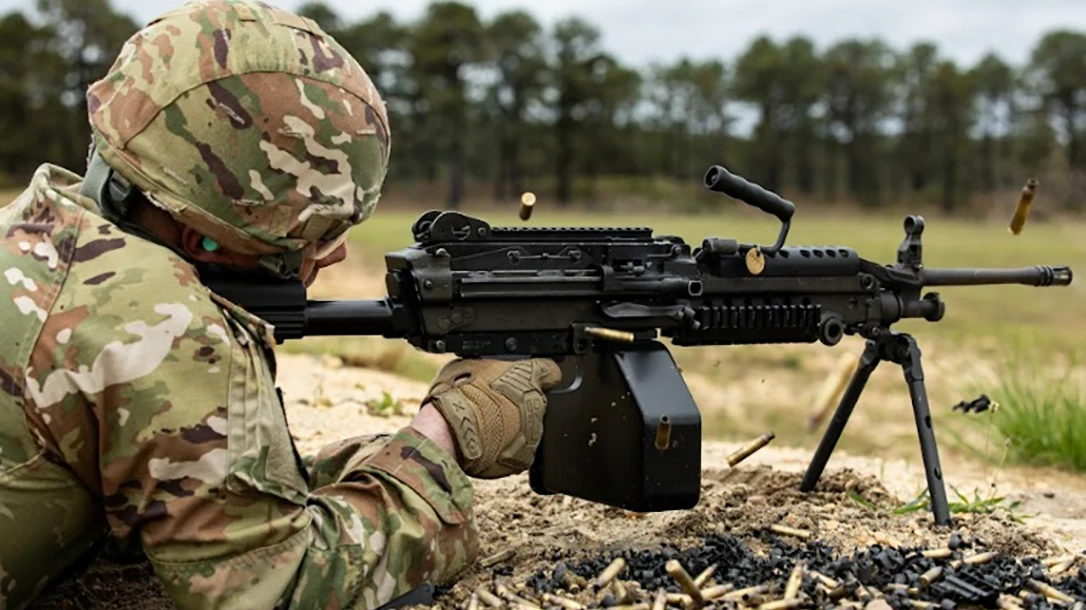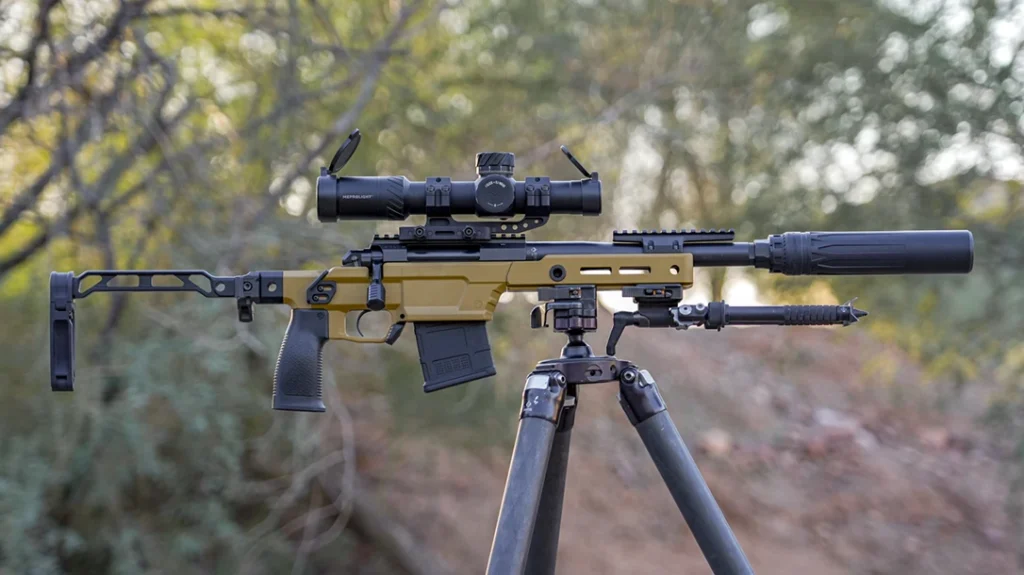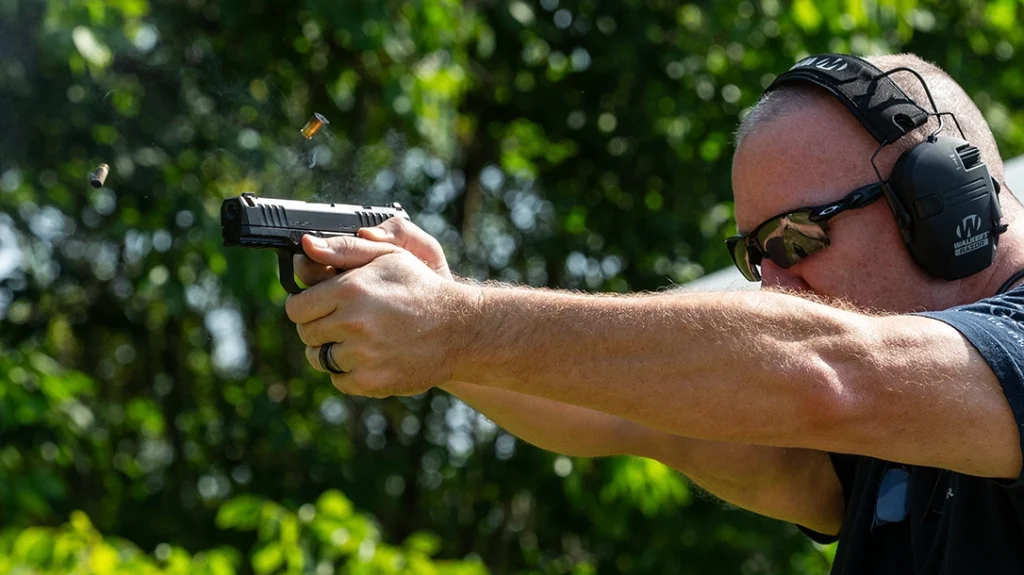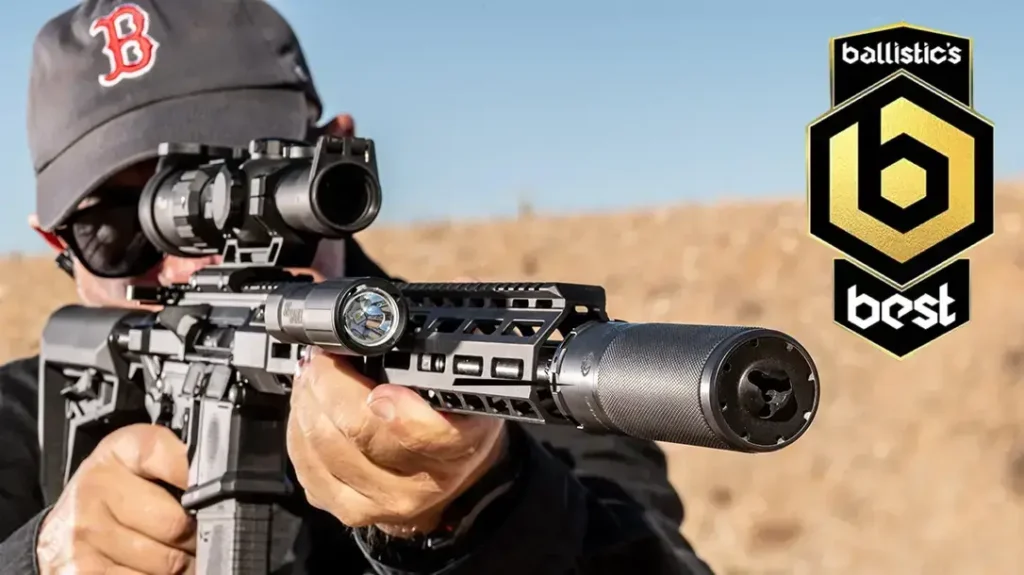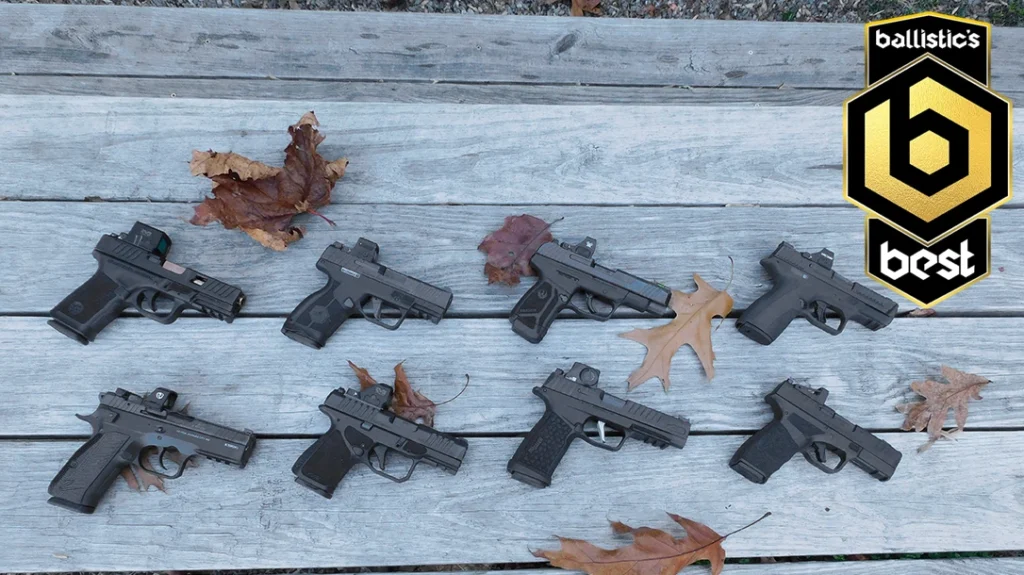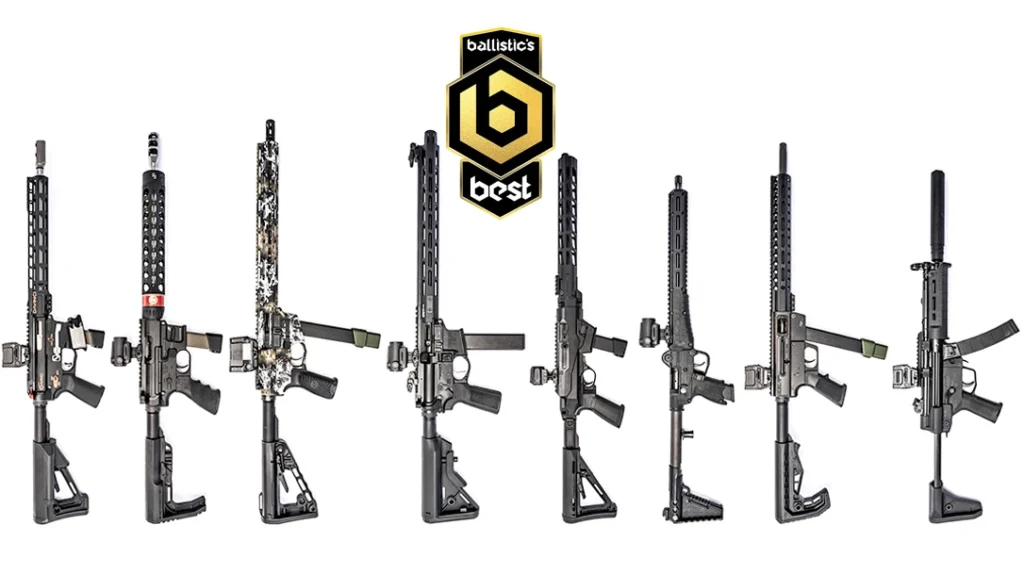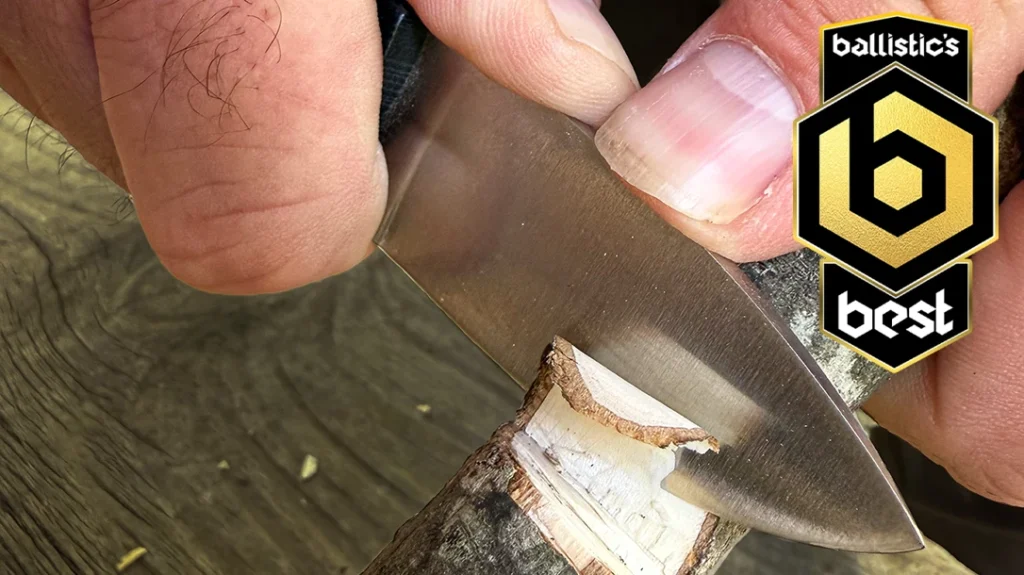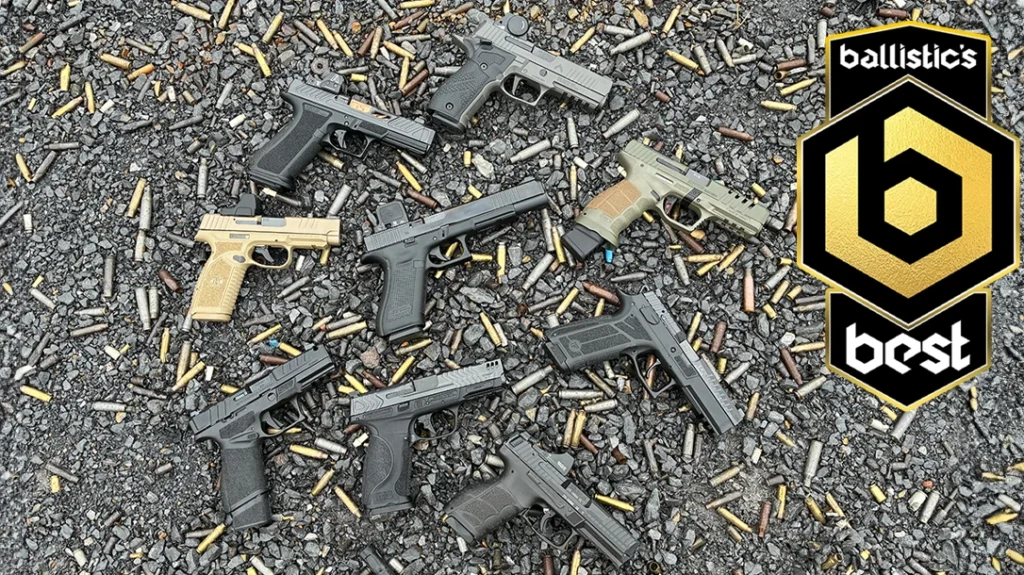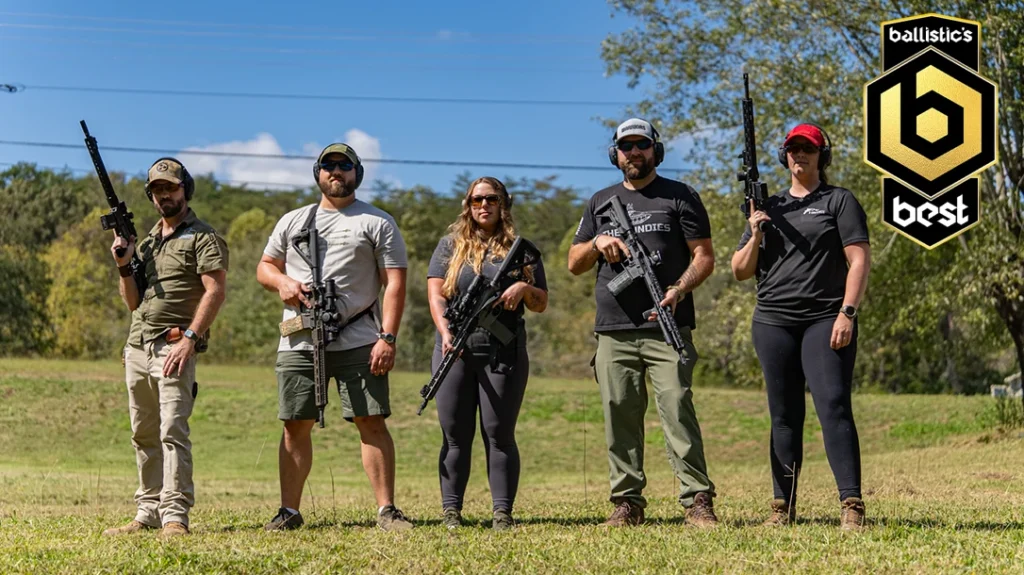There are few guns as enjoyable to shoot than the M249 SAW. It is truly some belt fed happiness. Lightweight with low recoil, it has been a go to for decades. Today we will take a look at this sexy shooter! It is Belt fed happiness.
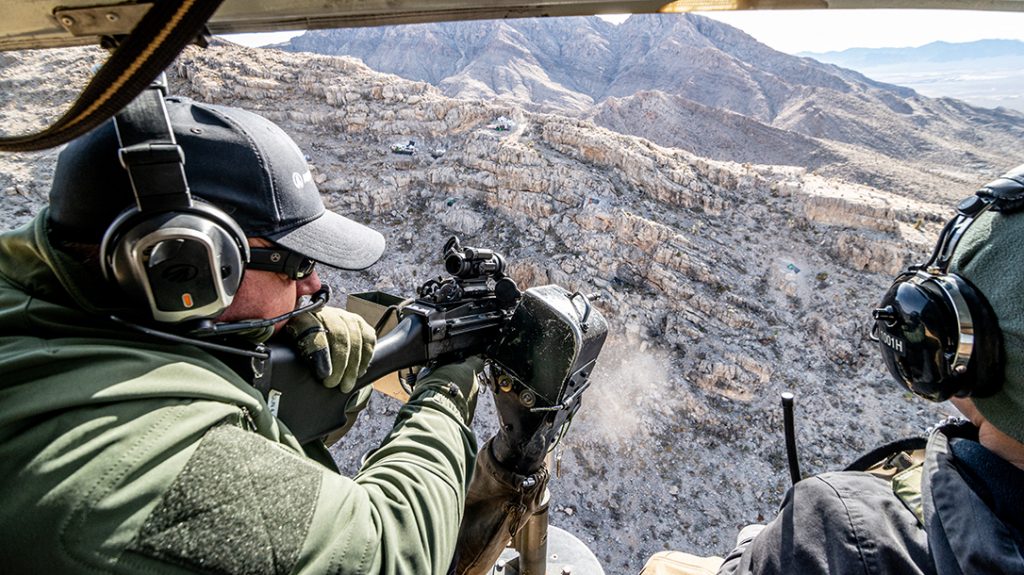
Few Guns are as Enjoyable to Run as the M249 SAW
There are few things that stir a more primal grin than the sound of a belt-fed machine gun. The pounding of the rounds running downrange coupled with the light ping sounds as the brass and links hit the ground is an experience not soon forgotten. The M249 is a gas-operated, air-cooled belt-fed machine gun that has seen action in every major conflict involving the United States since the U.S. invasion of Panama in December of 1989.
Advertisement — Continue Reading Below
Generally just called the SAW, the M249 has seen action in every major conflict involving the United States since the US invasion of Panama in December of 1989. The SAW is still in use today with only a few modifications. At this time there are over five different variants of the SAW in use in the US Military. The SAW is an American adaptation of a popular Belgian light machine gun manufactured by Fabrique Nationale d’Herstal (FN). Their original weapon was designated the FN Minimi (Mini Mitraillause or “mini machine gun”). Very little was changed from the original Belgian design. Ultimately the manufacturing of the new SAW would fall to an American subsidiary of Fabrique Nationale – FN Manufacturing LLC based in South Carolina.
Sawing Through the Ages
The history of the American development of the SAW is one seen in most military weapon systems. Yet it has a few twists of which most people are unaware. During the 1960’s the military began several studies on options to replace the effective, but heavy M60 machine gun. The military was in need of a very specific weapon to fit the gap. The M16 was a good weapon but incapable of sustained automatic fire. The M60 weighed as much as a bus and the venerable M14’s and BAR’s had essentially been put in moth balls. The parameters for a new weapon were narrow and held some very specific points. The two main points though were that the machine gun had to be light and be capable of sustained automatic fire.
Advertisement — Continue Reading Below
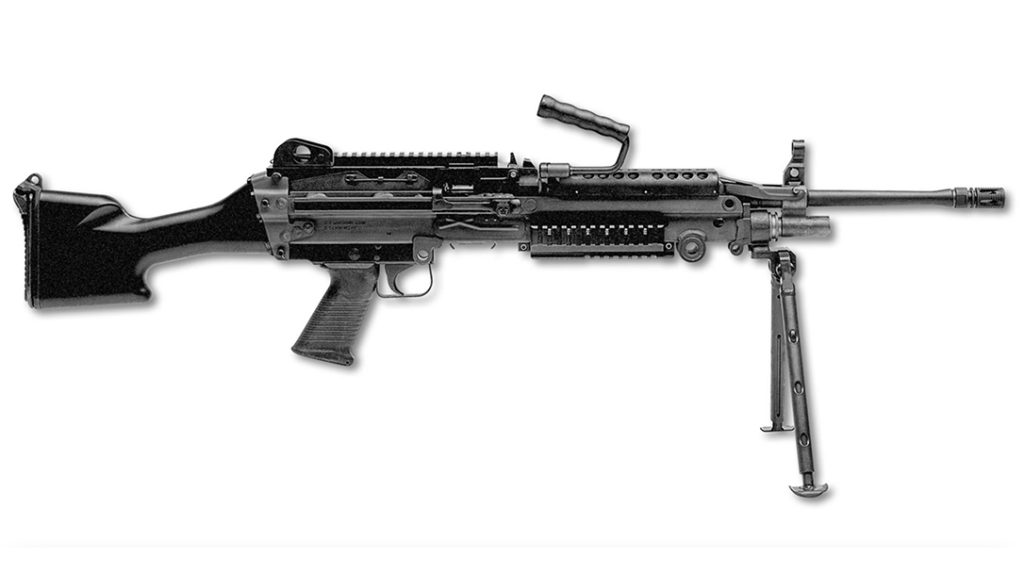
Army Small Arms Program
In 1968 the Army Small Arms Program set the ball in motion to find a weapon that fit the parameters set forth. The design and ammunition requirements were fluid to say the least. At one point the Army considered using a weapon that fired flechettes. That idea fell to the side and development continued. When the first wave of designs, submissions and research were complete the Army was able to better set out their design requirements of the new “Squad Automatic Weapon”. The design specs for the gun included both 5.56mm and interestingly, 6mm ammunition requirements. The 5.56mm round was still considered underpowered for combat and the 6mm was an attempt to remedy that.
In fact the originally planned version of the SAW leaned heavily towards being chambered in 6mm. As testing began, real concerns began to surface about the 6mm round. The logistics of introducing a new round into the inventory and the headaches that went with it were legion. This coupled with improvements made in the case, turned the gun back towards the 5.56mm round.
Advertisement — Continue Reading Below
Lightweight
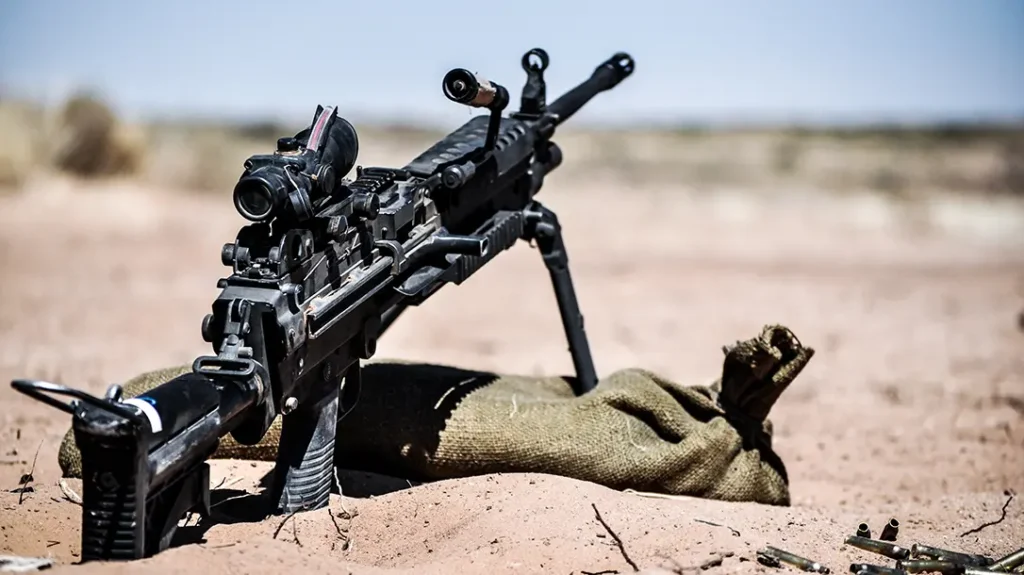
The initial prototype testing began in early 1974 with three submissions. A heavier version of the existing M16 called the HBAR; Fabrique Nationale d’Herstal’s Minimi and the Heckler and Koch 23A1. Almost six years later, and with an encyclopedia of revisions and modifications, a final decision was made. In May of 1980, the Fabrique Nationale d’Herstal’s Minimi was awarded the contract for further development. It would be the US Military’s “official weapon” 24 months later. The final step took place in 1984 when the weapon entered service with the US Army, a journey of over 26 years from concept to trigger pulling on the front lines.
Functions
The M249 SAW is a gas-operated, air-cooled belt-fed machine gun. It comes standard with a folding bipod that conveniently folds up into the base of the foreword grip. It is primarily belt-fed via disintegrating metallic links. Ammunition is carried in 200-round plastic drums or soft pouches holding 100 rounds each. These clips easily go to the underside of the weapon. An unusual and strong attribute of this gun is that it can be run with standard M16 magazines as well. While not a preferred method, it is a unique feature that allows this gun to stay in the fight even when linked ammo has been depleted. The weapon fires from an open bolt and has a cyclic rate of 750 to 1000 rounds per minute, depending on the gas setting.
Advertisement — Continue Reading Below
Because of the high rate of fire, the SAW was designed with a heavy 1 in 7 twist barrel designed for quick change. With a short pull of a lever at the base of the barrel, it releases and comes out. A fresh barrel is slid into place, and the gun is up and ready to roll once again. Total change time – 30 seconds with experienced shooters. While the gun comes with a hooded front post sight and peephole rear aperture sight, most weapons ended up with optics to increase their effectiveness. The design and weight allow it to be shoulder-fired, but it is most easily run with the bipod or mounted in a vehicle. Belt fed happiness.
Functions
The original design requirements for the SAW were pretty broad and stated that the weapon must have an effective range of at least 800 yards. The question then has always been, “What is effective?” In my experience the SAW is surprisingly accurate and is close to its’ M16 cousin or other 5.56 rifle. In zeroing procedures where one round at a time is fired, I have seen exceptionally tight groups achieve matching or surpassing many battle rifles. Far beyond what most would expect from this weapon. It does have obvious limitations because of mass-produced ammo and its fully automatic design. What is undeniable is that the weapon is man-effective at 800 meters and suppressive effective out past 1000 meters. Its’ overall reach is over 3600 meters, making it a solid tool for any platoon or squad.
Passport Please
The M249 SAW has been brought to bear on US enemies since 1989. It saw extensive use starting in 1991 with the beginning of the Gulf War and would continue to serve in Somalia, Bosnia, Kosovo, Iraq, and Afghanistan. The SAW is in the armories of all the branches of the US military as well as the State Department Diplomatic Security Service. The SAW has also found its’ way into the hands of US allies, including Bolivia, Columbia, and Tunisia.
Advertisement — Continue Reading Below
Flavors for Every Taste – Belt fed happiness
As with any modern service weapon, the M249 SAW has been the base for a number of variants. The truth is that with time, any weapon can be modified to better fit the needs of this group or that group. This is a tribute to the solid bones found in the SAW. Some of the more common versions are:
M249 Paratrooper – modified to better serve airborne troops. Its’ modifications include a shorter barrel and collapsing butt stock.
M249 Special Purpose Weapon – This version is the product of the desire of the Special Operations community to use the weapon in a lighter configuration. The carry handle, magazine insertion well and mounting lugs have all been removed to cut weight. Additionally, the weapon has been fitted with a picatinny rail on the feed cover and foregrip.
Advertisement — Continue Reading Below
Mk46 Mod 0 – This version of the gun is the creation of the Naval Special Warfare Command and is very similar to the M249 Special Purpose Weapon design. The differences are that the MK46 has placed the Picatinny rails differently, and they opted to stay with the traditional fixed butt stock. The MK46 also has the ability to use a variety of barrels, including a light special-purpose weapon barrel or a heavier fluted barrel designed specifically for SOCOM.
There is even a version of the M249 SAW chambered in 7.62 x 51 mm NATO. This version is designated the MK48 and is used primarily by US Special Operations Command. This latest version of the SAW however would be an omen for its’ overall future.
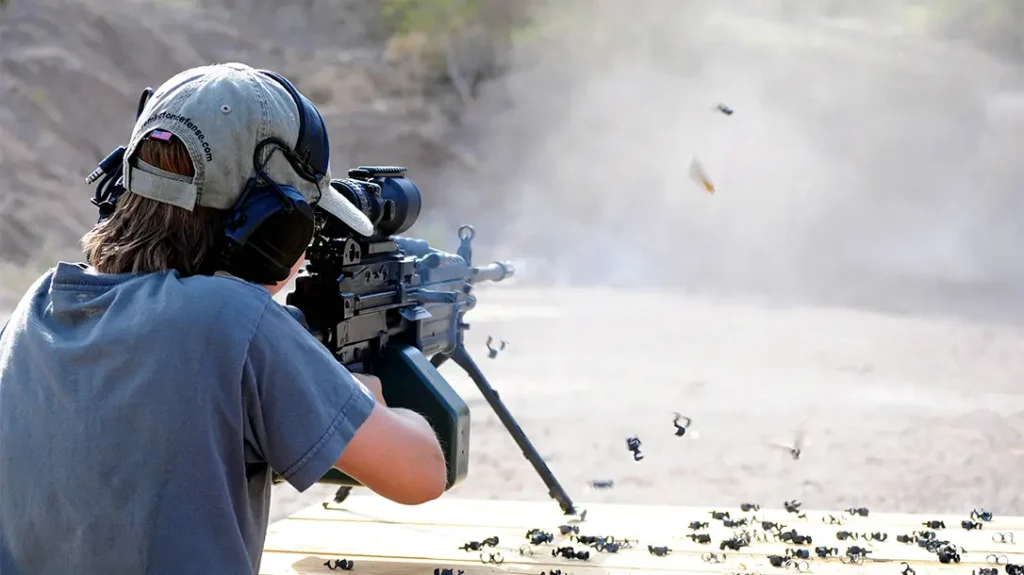
Advertisement — Continue Reading Below
Belt fed happiness -A Trigger Puller’s Perspective
I had the privilege of having a long discussion about the SAW with a retired marine. This 20-year marine had spent most of his time in the recon battalion and eventually became a recon instructor. He carried the SAW on multiple occasions, including duty in Somalia and Iraq. His most poignant thoughts were that the SAW was “an outstanding force multiplier and one of the best ‘break contact’ weapons in the recon community by far.”
He went on to share that the only real downside of the weapon is weight, “if you were the poor soul who was carrying this on a long-range reconnaissance mission, you better have a strong will and be no stranger to the gym.” This echoes the thoughts shared by anyone who carried the SAW. While lighter than it’s’M60 brother, it still has the ability to test your stamina. Overall, he gave the SAW two thumbs up.
Old Horses
While respected and feared, the unfortunate fact is that the M249 SAW is getting old. The US Military has never been keen on buying “fresh” weapons to replace old ones, and the SAW is starting to show its age. The Army has started an intensive program to refurbish the SAW in order to get every last bit out of this old war horse that it can. However, the writing is on the wall, and replacement weapons are already being fielded for testing. The SAW will still be around, but the evolution of weapons continues and waits for no one. Forty-six years after the pen was put to paper, giving birth to the concept, the SAW has become an icon of the American arsenal. Recognized around the world for its effectiveness, the M249 SAW will remain a legend in the history of American firepower. It is True Belt fed happiness.
Advertisement — Continue Reading Below
M249 Squad Automatic Weapon (SAW) Specs
- Caliber: 5.56x45mm
- Operation: Open-Bolt
- Overall Weight: 17 pounds
- Barrel Length: 20.5 inches
- Overall Length: 40.75 inches
- Overall Height: 9.5 inches
- Rate of Fire: 775 RPM
- Effective Range: 800 meters, point target
- Maximum Range: 3,600 meters
- Twist Rate: 1:7″ RH
- Trigger Pull: 7.9-15.7 pounds
- Color: Matte Black, Non-Reflective Finish
